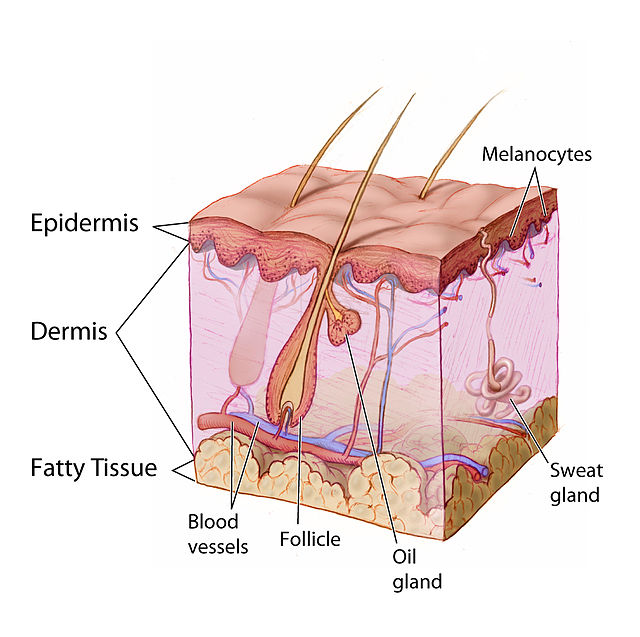Everyone might have heard about the skin microbiome, but do you know where it comes from — and the incredible work it’s doing right now to protect and maintain your skin? Across your face and your entire body is an invisible ecosystem of fungi and bacteria working in harmony to promote health and glowing skin. Your microbiome plays a direct role in a wide range of skin functions—from texture to hydration. The work your microbiome performs is both intricate and essential. Read below to discover more about what it’s doing behind the scenes to support your skin health.
Where Does the Microbiome Come From?
Believe it or not, your microbiome is “born” the moment you are. Research shows that babies delivered vaginally develop a microbiome similar to their mother’s vaginal flora, while babies born via C-section have a microbial community more similar to skin. That means your earliest skin health may have started with your very first exposure to the world.
At birth, your first microbial visitors immediately begin training your skin to recognize which bacteria are helpful, harmful, or neutral. This early microbial education is critical for your lifelong health, and its effects can be observed well into adulthood.
A baby’s developing microbiome is also learning to stay alert to potentially harmful pathogens that could impact the skin or body. As you grow older, your microbiome evolves and strengthens. One of the most significant shifts happens at puberty, when hormonal changes alter your microbial balance as your body transforms. Puberty essentially helps shape the foundation of the skin microbiome you carry into adulthood.
How Does the Microbiome Protect You Against Pathogens?
To understand how your microbiome guards against external threats, it’s helpful to know the skin’s structure. There are three key layers: the hypodermis, dermis, and epidermis. (See diagram below.)

The skin is made up of numerous layers of epidermal and dermal keratinocytes—specialized skin cells that are both porous and protective. The outermost layer of the epidermis, the stratum corneum, contains up to 100 layers of keratinized cell envelopes forming a crucial physical barrier.
Microbiome Barrier
The layer of skin directly exposed to the environment is also where most of your microbiome resides. This microbial layer plays a central role in your skin’s barrier function and maintaining homeostasis. Microbes in this zone secrete enzymes that promote desquamation—the natural process of cell renewal.
Just as we exfoliate to keep our skin clear and glowing, your microbiome is continuously working on a microscopic level to remove dead skin cells and support healthy regeneration.
Healthy Competition
While your microbiome generally works together to maintain balance, it’s also a highly competitive environment. This competition drives microbial survival and ensures that only the most robust organisms persist.
As noted by researchers Flowers and Grice in The Skin Microbiota: Balancing Risk and Reward:
“To ensure survival, skin-resident bacteria must compete to maintain colonization of their niche and access to nutrients… In the skin, resident microbiota protect the skin from invading, pathogenic, or opportunistic microbes through the process of colonization resistance… One manner in which bacteria can eliminate competition is through direct killing of competing microbes.”
That’s right—there’s a microscopic turf war on your skin, and the result of that battle often determines how balanced and resilient your skin is.
But sometimes, harmful bacteria gain the upper hand. This can lead to inflammatory skin conditions like eczema, acne, atopic dermatitis, or psoriasis. Keeping your microbiome balanced is essential for maintaining optimal skin health.
Detecting Imbalances in the Skin Microbiome
Many common skin issues — including dryness, sensitivity, acne, rosacea, and eczema — have been linked to microbial imbalances. Simply put, healthy skin requires a healthy microbiome. Understanding the skin microbiome is essential for developing effective skincare solutions, diagnostics, and personalized treatments.
The most accurate way to assess the skin microbiome is to test it. We offer solutions for businesses to assess the impacts of their skin care products on the skin microbiome. Our Skin Microbiome Kit is easy to use at home and requires just one simple swab. With HelloBiome’s advanced sequencing and AI-powered analysis, results include:
- A full profile of the trillions of microbes living on each individual’s skin
- Personalized skin health scores for comparative or longitudinal assessments
- Customized, science-backed diet and skincare recommendations
Learn more about our test here.
How Can I Repair an Unbalanced Microbiome?
If you discover your microbiome is out of balance—either through our Skin Microbiome Kit or by noticing skin symptoms—there’s always a path to restoration. With a few mindful changes, you can help your skin flora thrive:
- Use microbiome-friendly, minimalist skincare products
- Avoid over-washing or over-exfoliating your skin
- Follow one of our microbiome-centered routines
We’ve created two targeted routines — Recovery and Maintenance — specifically designed to help support and preserve your skin’s microbial health.
References
https://www.ncbi.nlm.nih.gov/pmc/articles/PMC6874717
https://www.frontiersin.org/articles/10.3389/fimmu.2019.02950/full
https://www.ncbi.nlm.nih.gov/pmc/articles/PMC3535073